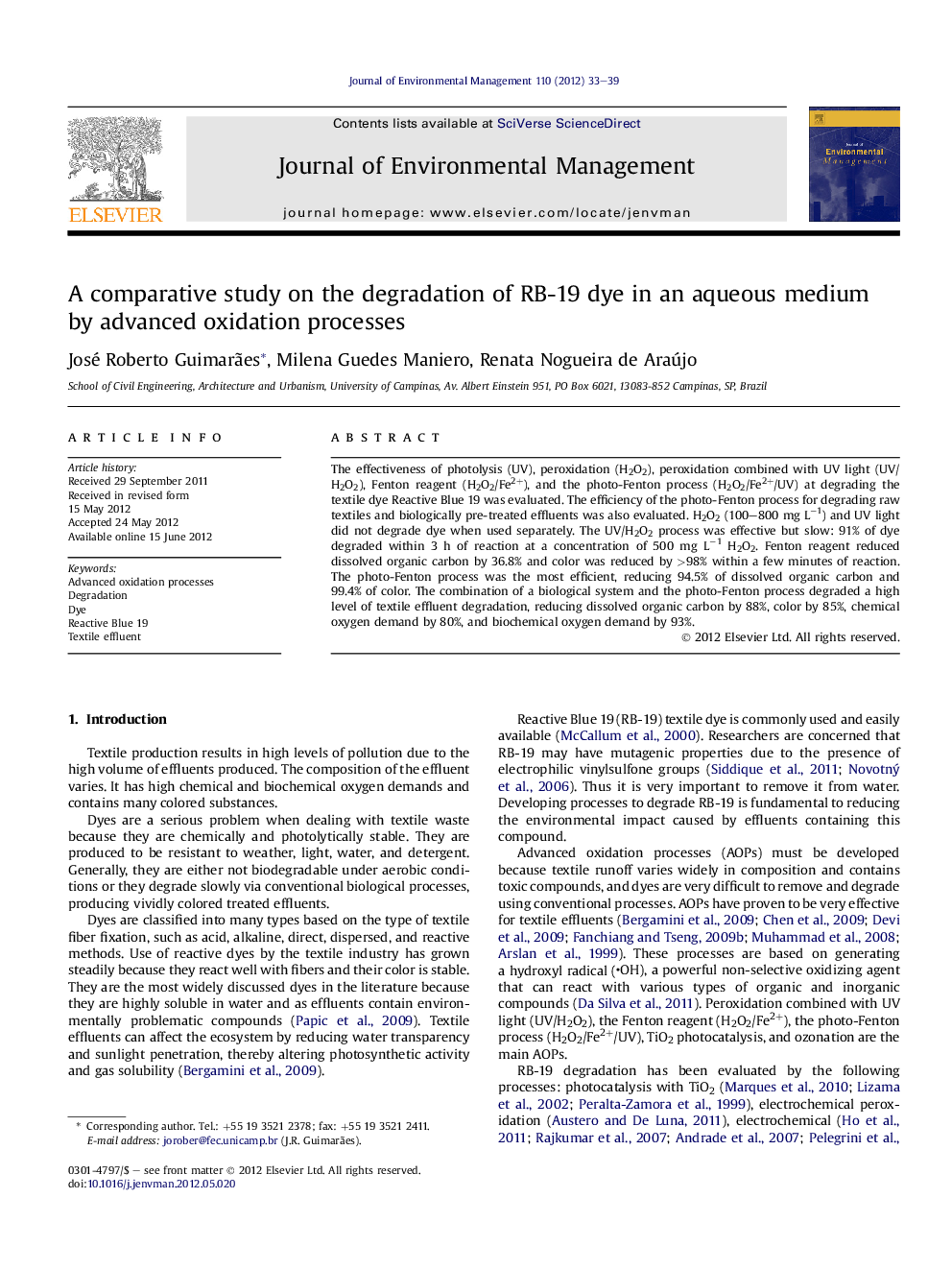| کد مقاله | کد نشریه | سال انتشار | مقاله انگلیسی | نسخه تمام متن |
|---|---|---|---|---|
| 1056504 | 1485302 | 2012 | 7 صفحه PDF | دانلود رایگان |

The effectiveness of photolysis (UV), peroxidation (H2O2), peroxidation combined with UV light (UV/H2O2), Fenton reagent (H2O2/Fe2+), and the photo-Fenton process (H2O2/Fe2+/UV) at degrading the textile dye Reactive Blue 19 was evaluated. The efficiency of the photo-Fenton process for degrading raw textiles and biologically pre-treated effluents was also evaluated. H2O2 (100–800 mg L−1) and UV light did not degrade dye when used separately. The UV/H2O2 process was effective but slow: 91% of dye degraded within 3 h of reaction at a concentration of 500 mg L−1 H2O2. Fenton reagent reduced dissolved organic carbon by 36.8% and color was reduced by >98% within a few minutes of reaction. The photo-Fenton process was the most efficient, reducing 94.5% of dissolved organic carbon and 99.4% of color. The combination of a biological system and the photo-Fenton process degraded a high level of textile effluent degradation, reducing dissolved organic carbon by 88%, color by 85%, chemical oxygen demand by 80%, and biochemical oxygen demand by 93%.
► AOPs were applied to degrade RB-19.
► Photo-Fenton process was the most efficient in the degradation of this dye.
► Degradation of both raw and pre-treated textile effluents was evaluated.
► Photo-Fenton process showed higher potential to eliminate color in wastewaters.
► Biological pre-treatment of the substrate improved the photo-Fenton efficiency.
Journal: Journal of Environmental Management - Volume 110, 15 November 2012, Pages 33–39